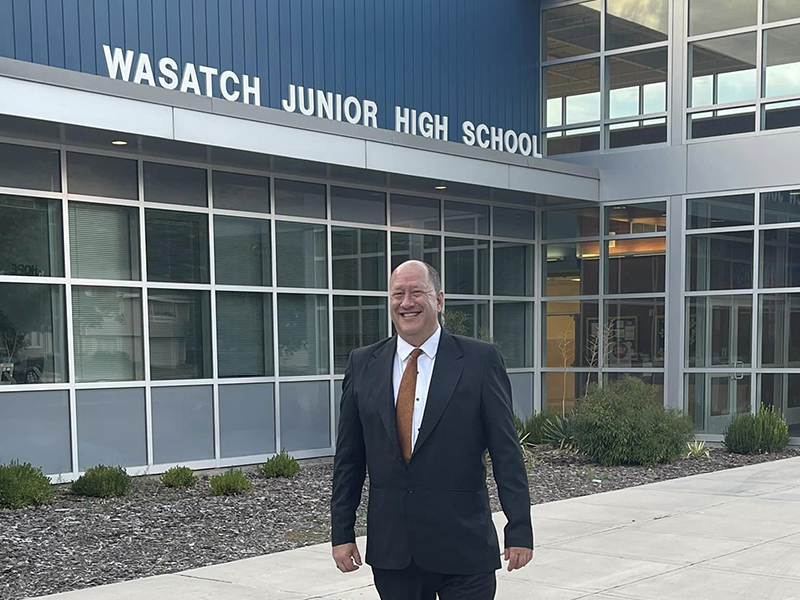Last week I had the pleasure of speaking with Wasatch Junior High Princpal Mary Basso and Vice Principal Renee DeHaan. Through the course of our conversation we discussed a wide variety of issues. Principal Basso only recently assumed her new position as head of the school and as a consequence when questions were asked she was unsure of the answer, she deferred to the Vice Principal.
Given the recent concerns of Morningside Principal Reese, I of course asked if a potential shooting was of concern, given the large number of national shootings and threats made at nearby schools. As I observed the new school layout, it was obvious the building had been designed with the intention of securing the school and protecting all involved, were an event to occur. The school clearly had a controlled access point and an easy means of closing off corridors quickly in an emergency. Class room doors could also easily and safely locked from inside, thus allowing students and teachers to shelter in place during a potential shooting. As consequence, it was obvious why neither the principal or vice principal was not overly alarmed. Both also indicated the school has a very open and proactive counseling staff who quickly identify potentially troubled students so they can be provided appropriate support services and take preventive measures should a situation appear to be escalating out of control.
The next subject we discussed was the presence of large numbers of out of boundary students at the school. Wasatch is a highly respected public school and children from both Park City and the wider Salt Lake Valley travel large distances to attend. Both the Principal and Vice Principal also freely acknowledged all of our local schools are dependent upon the presence of large numbers of out of boundary students and without these students, large numbers of our local schools would be shuttered. In the case of Wasatch Junior High, for example, nearly seventy percent of the current student body travels from out of boundary. When asked what the school currently does to support these students, both indicated the school closely monitors students who show signs of possible distress and then quietly pull them aside and discreetly offer support—both with food aid, counseling, and whatever appropriate tools are available. Special efforts are also made to ensure other students do not learn of these encounters so as not to stigmatize the students.
Another important topic of discussion involved students who aren’t always at the top of their academic class but who also have different skills sets needing to be developed and nurtured. While Wasatch is a high performing academic school, not every single student will attend Harvard and as a result the development of every single student matters, regardless of their current class rank. Both individuals indicated the school also collaborates with out of boundary technical schools to provide options to students with alternate needs.
At the conclusion of our conversation I asked if I were fortunate enough to be elected by the residents of my district if they would be open to discussing ways I could support their students and help the school fulfill its mission; both indicated they are.

